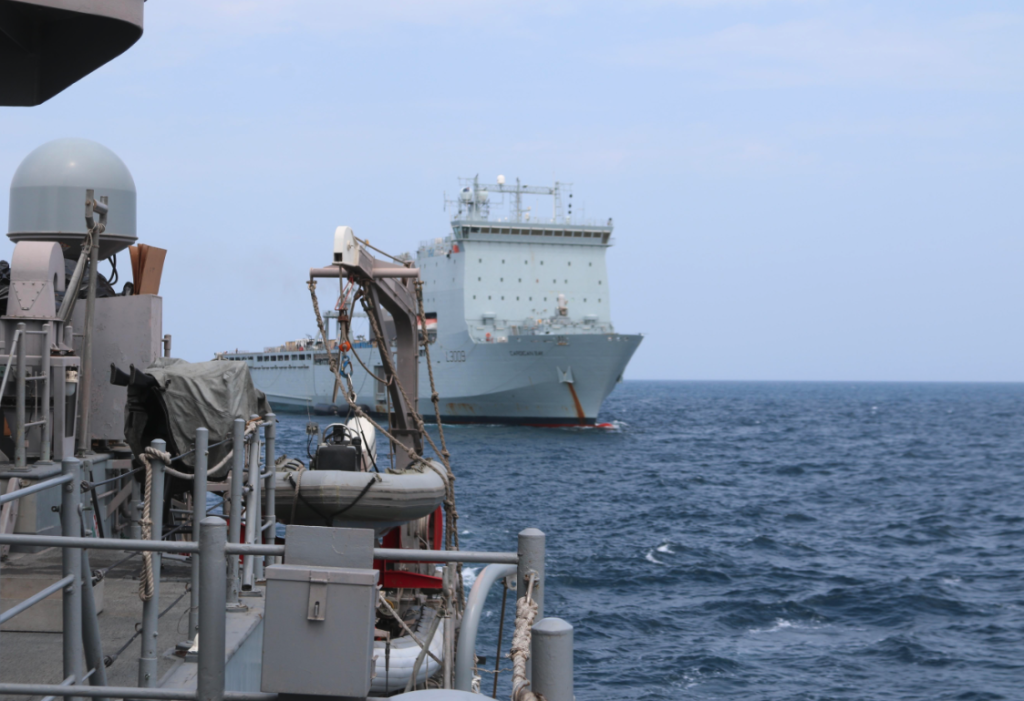The Arabian Sea was the site of combined US and UK mine-countermeasure (MCM) exercise Poseidon’s Chalice between 26 February and 16 March 2024.
Royal Fleet Auxiliary Bay-class landing ship RFA Cardigan Bay, Avenger-class mine countermeasures USS Gladiator (MCM 11) and Avenger-class mine countermeasures USS Sentry (MCM 3) participating in training opportunities in mine warfare and explosive ordinance disposal training alongside a team from Task Force 56 that specialises in this mission type.
Mine sweeping equipment was twice deployed to combat moored mines in demonstrations in the Arabian Sea, among other training efforts that included anti-terrorism operations, small boat operations, and an underway replenishment at sea and damage control drill.
"Our collaboration with the Royal Navy, the RFA Cardigan Bay, USS Sentry and US expeditionary mine countermeasures force during this exercise has enabled us to enhance our core mine warfare capabilities and foster a stronger alliance and more effective response to emerging threats,” said USS Gladiator executive officer, Lieutenant Commander Joseph Minnich.
“Through our partnership, we've refined tactics, techniques and procedures making us better equipped to promote a collective commitment to maritime security and stability in the region," continued Minnich.
The Cardigan Bay serves as the primary vessel for the newly integrated Royal Navy Motor Boat Harrier, an uncrewed 11m boat designed to identify underwater hazards as a component of autonomous mine-hunting activities in the Gulf. This initiative is part of a decade-long strategy to modernize the Navy’s fleet of mine countermeasure vessels.
The Harrier is equipped to function autonomously, executing pre-set missions, or to be controlled remotely from a command center on a ship or land. Armed with side-scan sonar technology, it thoroughly examines the ocean floor for mines, immediately alerting nearby land or sea units to their exact locations. Over the next few years, it is expected to work in conjunction with remotely operated underwater vehicles and a mine sweeping system.
In the last 20 years, leading naval forces have significantly invested in autonomous mine countermeasure technologies to mitigate the dangers and consequences of sea mines on naval missions. The US Navy launched the LCS MM Program, which includes the procurement of 48 Uncrewed Surface Vessels (USV) aimed at performing mine-hunting operations. These uncrewed vessels are designated for Unmanned Mine Sweeping (UMS) and Remote Mine hunting (RMH) tasks.









